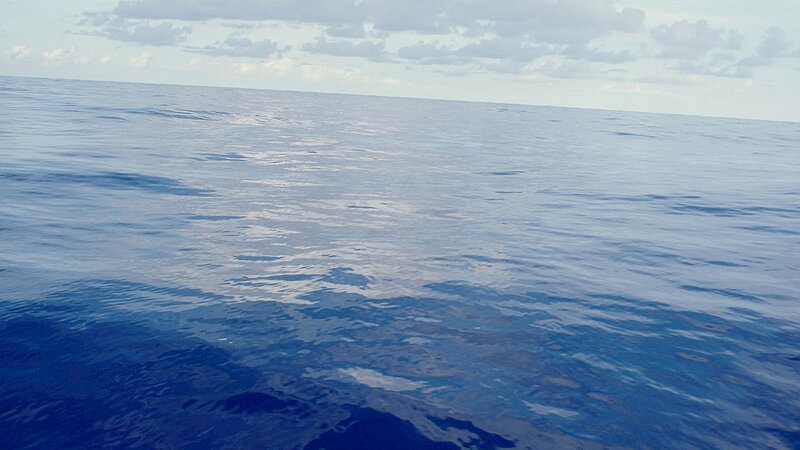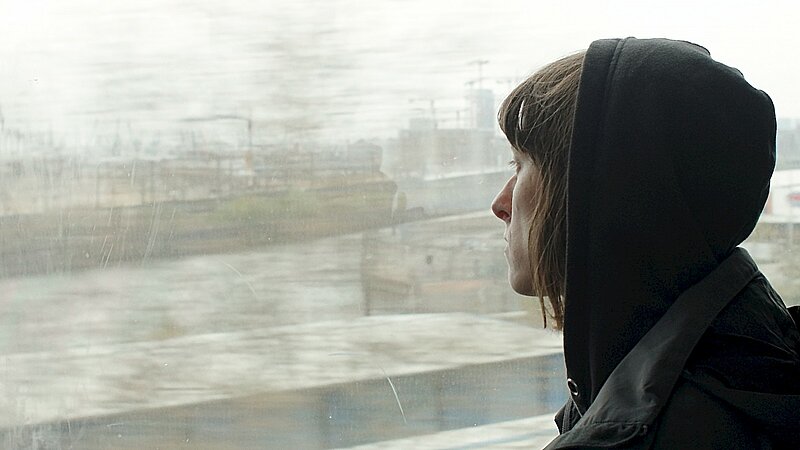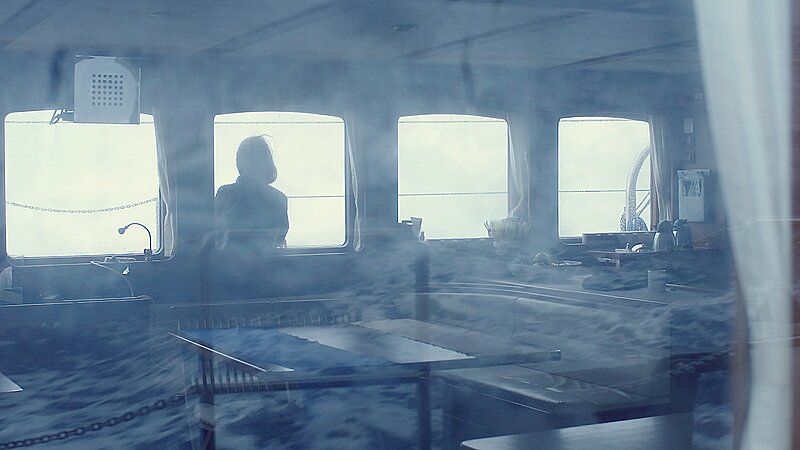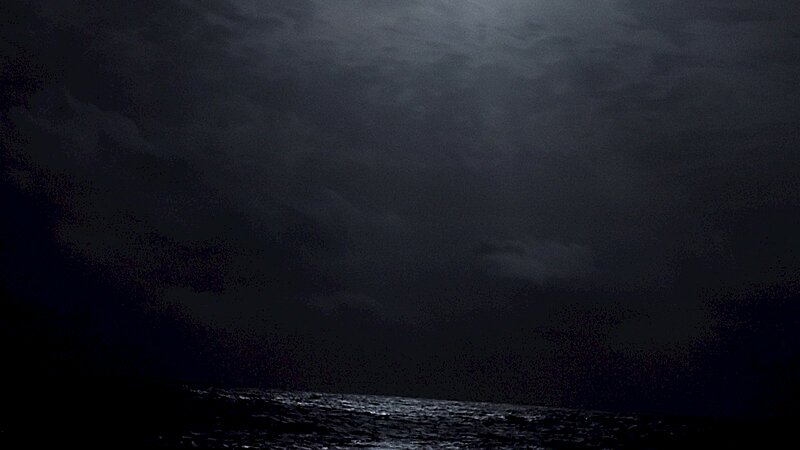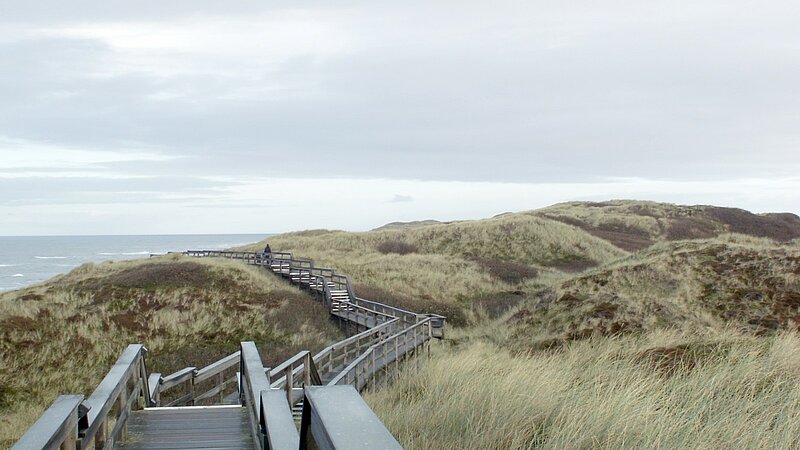Drift
Info
D-2017 | 95 Min. | DCP 2K | 1,78:1 | 5.1 Dolby Surround
Konzept, Regie, Kamera, Schnitt Helena Wittmann
mit Theresa George und Josefina Gill | Konzept und Research Theresa George | Ton Nika Breithaupt | Focus puller Pia Lamster | Titel Gestaltung und Dolly Grip Steffen Goldkamp | Tonmischung Simon Bastian – Zeigermann Audio | Dramaturgische Beratung Luise Donschen | Farbkorrektur Tim Liebe | Produktion Fuenferfilm / T, N, H | Sponsoring Sailing Classics GmbH | Mit der Unterstützung von VeNeue Kunst in Hamburg / Zeigermann Audio / Cinegate
Zwei Frauen verbringen ein gemeinsames Wochenende an der Nordsee. Bald wird die Eine zu ihrer Familie nach Argentinien zurückkehren und die Andere versuchen, dem Ozean ein Stück näher zu kommen. Auf einem Segelschiff überquert sie den Atlantischen Ozean. Gedanken verirren sich, die Zeit löst sich aus gewohnten Bahnen und die Dünung wiegt in tiefen Schlaf. Das Meer übernimmt die Erzählung und als die Andere wieder darin vorkommt, ist zwar der Boden unter ihren Füßen fest, der Wind jedoch liegt noch in ihren Haaren. Sie kehrt zurück und die Eine könnte fragen: „Hast du dich verändert?“
Spieltermine
Kinostart am 31. Juli 2020 u.a. im LE STUDIO Film und Bühne
Pressespiegel
„Helena Wittmanns Stimmungsfilm DRIFT schickt das Publikum auf Traumreise über hypnotisch mutierende Leinwandgewässer.“ Die Presse
„DRIFT von Helena Wittmann ist ein Wunder. Ein befreiendes Ausatmen von einem Film. Hier ist (endlich) jemand, der mit Bildern und Tönen eine Geschichte erzählt.“ Falter
„In DRIFT wird nicht nur der Blick aufs Meer gerichtet, irgendwann versucht der Film sogar den Erfahrungsraum « Meer » in Bilder zu übersetzen – was er mit dem Denken und Körper macht. “ Der Standard
„Man fragt sich, wie Wittmann, die ihren Film völlig unabhängig produziert hat, so jung zu einer so entschiedenen, klaren Ästhetik gelangen konnte. Und wie mag angesichts dieser Mischung aus visueller Perfektion und Empfindsamkeit ihr nächster Film aussehen? Manchmal sind die schönsten Bilder eines Festivals die noch nicht gesehenen zukünftiger Filme, denen man jetzt schon entgegenfiebert.“ Katja Nicodemus, Die Zeit
„Das Meer atmet, wir atmen, das ist schon Kino.“ Patrick Hozlapfel, Filmdienst
„DRIFT von Helena Wittmann wagt etwas. Eine Eigenschaft die viel zu oft abgängig ist im gegenwärtigen Kino.“ Jugend ohne Film
„Eine betörende Erkundung von Orten und Seelenzuständen zwischen Nähe und Transzendenz.“ Esther Buss. Filmdienst
„Die verschiedenen Wellenformen und Blautöne des Meeres, das funkelnd die Strahlen der Sonne zurückwirft, dessen Gischt in der Fahrrinne des Schiffes brodelt oder dessen Oberfläche sachte zischt, wenn die unzähligen Tropfen eines feinen Sprühregens darauf treffen.“ Katrin Doerksen, KinoZeit
„DRIFT ist eine sanft wogende und sinnliche Meditation.“ Hamburg Filmfest
„Es gibt auf Festivals Filme, bei denen einem die Augen ein bisschen weiter aufgehen, weil man merkt, dass etwas Unerhörtes vorgeht oder etwas nie Gesehenes auf der Leinwand vor sich geht. Helena Wittmanns Film DRIFT – eine Kontemplation über das Meer – ist so ein Film.“ Katja Nikodemus, NDR
„Das eigenwillige Werk ist eine Art Trance, wenn wir gemeinsam mit der Reisenden uns zunehmend in den beruhigenden Bildern des Meeres verlieren.“ Film-Rezensionen.de
„Meditative Meeresbilder vereinen sich mit einer klaren Ästhetik.“ Wiener Zeitung
„Landscape without figures“ Cinemascope
★★★★☆ „Are we ever in only one place at any given moment? DRIFT offers stirring audiovisual evidence of the idea that, emotionally and spiritually, we never are.“ Slant magazine
Biografie
Helena Wittmann wird 1982 in Neuss geboren. Ursprünglich studiert sie in Erlangen und Hamburg Spanisch und Medienwissenschaften. Zwischen 2007 und 2014 besucht sie die Hochschule für bildende Künste Hamburg (HFBK). In ihren Filmen und in ihrer künstlerischen Praxis sind Räume weit mehr als bloße Orte einer Handlung. Sie hinterfragt und kontextualisiert die Grenzen dieser Räume, in ihnen, mit ihnen, auf ihnen und entlang von ihnen. 2015-2018 arbeitete sie als künstlerische Mitarbeiterin an der Hochschule für bildende Künste und auch als Mentorin im Elias Querejeta Zine Eskola in San Sebastian, Spanien. Sie hat auch Kamera für Luise Donschen, Adnan Softic oderr Philipp Hartmann gemacht. Ihre Arbeiten werden international in Ausstellungen und Filmfestivals gezeigt.
Filmografie
2018 Ada Kaleh, Kurzfilm
2017 Drift
2014 21,3 °C, Kurzfilm
2013 Wildnis, Kurzfilm
Windeseile – Text von Helena Wittmann auf Jugend ohne Film
Festivals & Preise
Venedig | Viennale | Duisburger Filmwoche | Ficunam Mexiko | Jeonju IFF | New Directors New Film NY |
Bester Film Award- Laceno d’Oro Film Festival, Italien
Spezial Jury Preis – ZINEBI Bilbao, International Film Festival, Spanien
Material
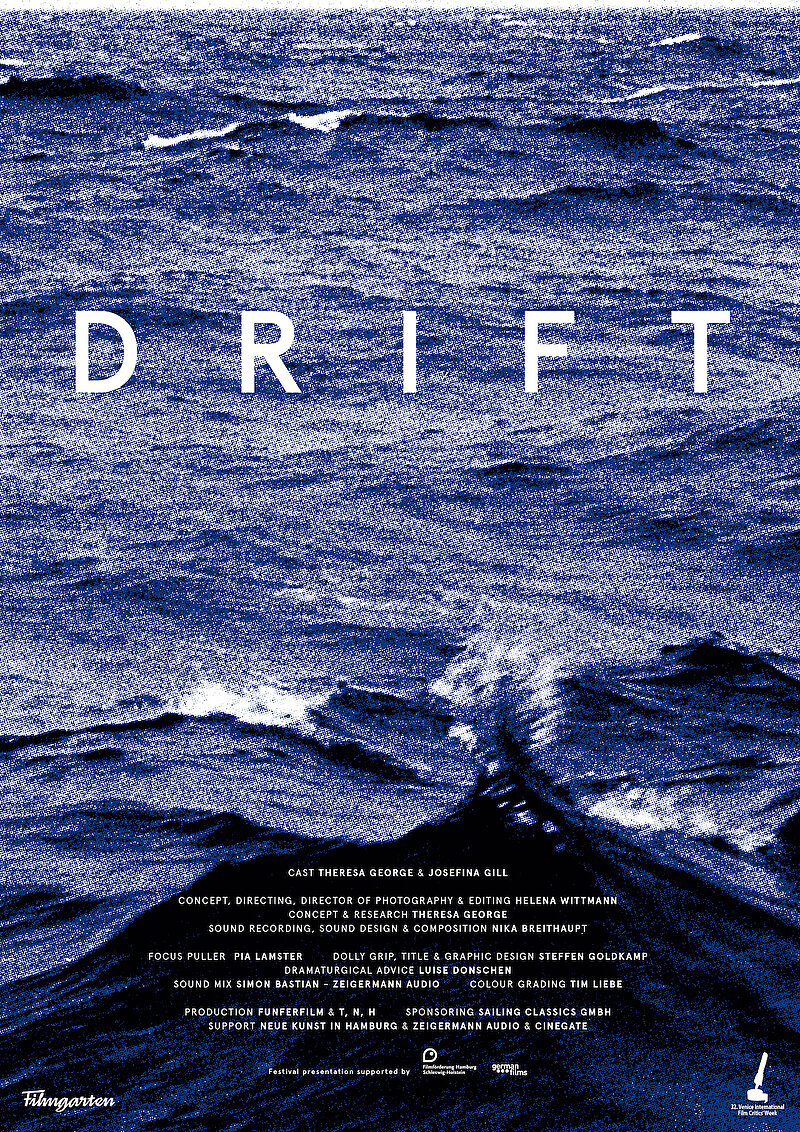
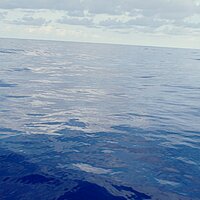
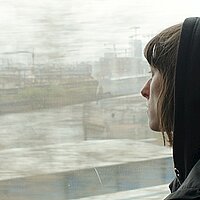
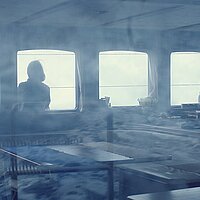
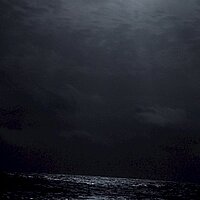
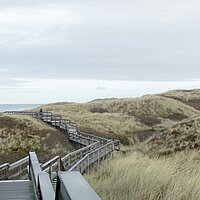
DCP Trailer
Trailer youtube & vimeo
Interviews
„Wenn das Meer eine Hauptrolle spielt.“ Interview auf Deutschlandfunk Kultur
„Between the waves.“ Interview auf mubi
TO INSIGHT ON THE WAVES OF YEARNING
An Interview with Helena Wittmann, Theresa George & Nika Breithaupt by Olaf Möller
OM: What was your idea when you began with the film?
At the outset, we just wanted to think and speak about the sea, to experience it. It was about putting the sea in relation to its representations, or rather to compare it to them. Would we learn to see something different, something special? We kept diaries, made entries like this one from November 2014 when we were on Sylt: On the first walk on the beach, through a reedy dune landscape (fur-covered mountains). Only the horizon of the beachgrass roots keeps the sand mass together. On the surface of the water, at first just the usual: a beautiful, loud sea, fairly high waves, clear skies, a little flotsam from the depths. But hardly any algae, hardly any smell. We had brought shells from Brazil, we throw them into the water and think happily about the idea that global circulation will take them back there. The wind sweeps and grows stronger and falls asleep again. The sea water washes, endures, layers sediments, it is, above all, also heavy matter. The light spreads, scatters, reflections sparkle. Clouds transform, fade, grow, tear, sink and rise. This is how time diffuses. Today entries like these seem like first wobbly steps, like vocabulary training or positioning. We had no choice but to understand the one (the sea) by means of the other (the land). At the coast we wanted to find out what yearning it is that drives us out there and what it is that has driven all the sea-travelers in the past. After all, they all started from a coast, and the lucky ones eventually shouted, „Land ho!“.
OM: Who is the character Theresa, and what is her relationship to Theresa George, whom she represents and who has worked on the project?
When we started, Theresa was more of a test person, since we lacked other bodies. In the following months a character named Theresa developed, who we put down on paper for a grant application. And although at that point we were still assuming we would be making a documentary film, we invented a grandfather who was lost at sea. It was uncomplicated, because there was a grandfather, whom Theresa had never met and about whom the family hardly spoke. So we could fill a gap. As a result of our work, Theresa began to ask her father about her real grandfather. His name was Wolfgang Lange. We found out that he had given up his post as head editor at a renowned East German publishing house, and had embarked on a long sea voyage to Cuba on a merchant ship. After that he wrote simple adventure stories. They were published in small magazines with colorful covers and sold at low prices. One had the title „The Safe on the Seabed“. Our fictional story was in danger!
When we boarded the plane to Antigua, our story of the missing grandfather was already history. The figure „Theresa“ still had something “documentary” about her: she was still an anthropologist, who was conducting research in the context of the subject of our film. On the third day on the Caribbean island, Theresa told us she was uncomfortable about that. The relationship of Theresa as a figure to her real-life position as a co-author of the film, and her expectations for the film and for herself as an anthropologist were unclear. Uncertainties developed, which were eventually reflected in the material. Together we decided to give up the idea of making a documentary, and changed the format entirely to fiction, which also made our positions in the filming clear.
OM: And Josefina?
Josefina is real. She lived in Hamburg for five years before she decided to leave the city and return to Buenos Aires. She told us on a sunny day, the air was still cool. She cried, but she beamed. For us, a fear became a certainty. All of this happened after we had already shot several scenes of Josefina and Theresa as friends. Shortly before she left, five suitcases were almost fully packed and two had already been sent on their way as harbingers. We set up the camera in her room, which was nearly bare, and shot some subdued conversations between her and Theresa. It hurt to see Josefina packing while the camera was rolling. We knew the images and sounds would remain, but she would soon be gone. Today the Atlantic lies between us.
OM: The title is ambiguous. Drift can mean either a steady movement (of the sea, or of wind), or it can mean being blown off course when sailing...
The title determined our course very early. We think it fits, both in terms of the drift, by wind or current, you can experience when sailing, and for the narrative form of the film. Again and again our course changed slightly, and we welcomed these changes. Before one can perceive drift at all, one has to have a clear course. I think this describes the way we work very accurately.
OM: In light of the narrative of the cosmic crocodile, which keeps things moving, the question arises: What kind of sea literature did you read to prepare, or maybe you watched movies about the sea?
We read and watched all kinds of things. As far as literature goes, we read classics like Conrads, Maupassant, Melville, Traven, etc., and some culture theory works. Theresa read a lot of social science and humanities publications – from classical ethnographies with regard to the role of ocean views and journeys at sea (e.g. Franz Boas, Theodor Koch-Grünberg, Claude Lévi-Strauss, Michel Leiris) to critical studies of ethnographic (field) research and theory formation (e.g. James Clifford, Michael Taussig). She also researched studies on the relationship between culture and nature (including Philippe Descola, Eduardo Viveiros de Castro, Bruno Latour), the history of the sea (e.g. Paul Gilroy) and, of course, studies pertaining explicitly to maritime space. The essay "Nature/Culture/ Seawater" (2011) by the anthropologist Stefan Helmreich inspired all three of us, because it helped us pull together many aspects that were floating around in our heads, but that we had not been able to organize until then. After reading that essay, we read and discussed some of his other publications ("Alien Ocean" (2009), "Sounding the Limits of Life" (2016), and others).
We also watched several films early on. From films by Peter Hutton to "Description of an Island" (1979, Cynthia Beatt & Rudolf Thome), "Man of Aran" (1934, Robert Joseph Flaherty), “Leviathan” (2012, Lucien Castaing-Taylor & Véréna Paravel), “Agatha ou les lectures illimitées" (1983, Marguerite Duras), to “The Forgotten Space” (2012, Allan Sekula & Noël Burch) and many more which we can’t recall in detail. Watching the films made us realize we wanted to try and avoid metaphorical references and maritime sociologies, just because there were already so many of those.
OM: How did you approach DRIFT – more as a search, filming particular things to see where it led, or did you know from the beginning how you wanted the film to look?
None of us had ever been to any of the three places
we filmed – Antigua, where the voyage began, the open ocean, or the Azores, where we landed at the end. So we were faced with the challenge of having to pay careful attention in order to quickly find the scenes, sounds, and situations that we thought would be of value to our work. And in these kinds of situations, something remarkable happens again and again. This totally focused perception leads to moments of intimacy in the midst of what is, in and of itself fully unknown. The precise look and attentive listening are the first steps in coming closer. As if gently touching the surface made familiarity possible, which in turn is necessary to penetrate into the hidden layers of what we can see, hear, and experience. By capturing images, sounds and thoughts – with camera, sound recorder and notebook – we take the second step to a committed relationship. One could also speak of appropriation. It sounds brutal, but it shouldn’t be ignored: We also took something away in these far-away places. And creating moments of intimacy was helpful.
OM: Helena, what material did you use to shoot the scenes? Before you started filming did you try out different cameras, etc., to find out what worked best for this particular subject?
The film is digital. I would have liked to shoot on film, preferably on 35mm. In particular because a chemical process seems much more appropriate for our subject than a linguistic process, which digital is. We couldn’t do that for two reasons. The first is completely mundane: a fine arts travel grant and the sponsorship by Sailing Classics, which offers trips on sailing yachts, financed the trip, but other than that we had no funding. So we simply couldn’t afford shooting on film. The second reason: since I had no prior experience with shooting on the open sea, I decided to keep the equipment as small and light as possible. It also proved very useful during the filming to be able to watch what we’d shot whenever we needed to, in order to make further decisions. We didn’t have a script, but we had a direction we wanted to go that had developed out of our research and the field studies we had done beforehand. Moreover, for me, the close viewing of the material is one of the most crucial moments before the montage of the film, and it’s more complicated than it might sound. The material has to be evaluated for what it is. Regardless of the idea that was behind it and of the situation in which it was created.
OM: Helena, how did you find the locations, for example the completely white hotel room, that would fulfill your preference for projection-screen-like, spartan sets?
The vacation apartment on Sylt that you’re talking about – from the opening scene – I scouted on the internet. We not only shot there, we lived there, too. As well as in the house on Antigua. When I was looking for locations I kept an eye open for cinematic potential. This is very important to me, because, as you know, spaces are my venue. The rooms in the ship, on the other hand, we had no influence on, and they were a stroke of luck. In Hamburg, we shot in Theresa‘s and Josefina‘s apartments, as I really like how comfortably the two of them moved in them, and how animated spaces contribute to the narrative. Then there were the means of transport: the bicycle, the car, the ship, the subway train. Spaces that focus much more on their surroundings. Of course, the effects of time of day and weather conditions on the locations played a important role.
OM: You’ve created, among other things, an installation from the material for DRIFT. How did that happen? Helena, what kind of materials did you use, and has it given you new insights into these materials? Have you learned to look at them differently?
There are several DRIFT satellite projects. The most important event took place at Westwerk in Hamburg in October 2016: „The Wildness of Waves“. Stefan Helmreich gave a lecture on rogue waves, followed by a video sound installation by Nika and me and finally a discussion between Theresa and Stefan. There we concentrated on waves - sea waves, light waves, sound waves and social waves. After that the DRIFT project was invited to symposia at the University of Hamburg, at the Nature-CulturesLab in Bremen and at Johns Hopkins University in Baltimore. In January 2017 I developed a two-channel video installation for the exhibition „Tender Noise / Empfindliches Rauschen“. The focus lay on the sensation of movement on the ocean.
All of these satellite projects have given me new experiences in working on the film. As I work faster and with fewer restrictions on an installation, for instance, I found new ways of editing. Each of us could strengthen our expertise in our respective fields – Theresa, her work in anthropology, Nika in sound, and me in film. We enrich each other.
OM: Many of the images were shot at night...
The same location is a different place in the day and at night, without anything about it being hidden. At night, for example, it was possible to capture images of the ship without slipping into the maritime imagery of tropical wood, pure white, and shiny chrome. We loved the nights and the oily black that surrounded us. Even thought, which had become detached from any chronology, and the fragments in which we could communicate it, seemed to be best expressed in half-sleep and darkness. It was a state that opened up a lot of space for tales and stories.
OM: Was working with sound something that you, Nika and Helena, wanted from the start, or did that develop out of the material?
The interplay of sound and image is close to our hearts, and working with sound plays an important role during the development of a film. Because we’ve already worked together on many projects, we each know how the other work and we trust each other. One special thing about our collaboration is being able to have a constant dialogue during the editing process. On the one hand, this is very demanding and challenging, but on the other hand it enables us to communicate and consider the images and sounds together, which we couldn’t do with the “normal” process of scoring after picture lock.
OM: Nika, what kind of sounds did you work with or generate? Did you use natural sounds as a reference?
As the person responsible for sound while shooting, I was able to create and develop the sound for the film while we were searching for and capturing particular sounds and tones – especially on our long journey. Equipped with MS microphone, contact microphones and hydrophones, I was able to record the sound waves of the water in its many facets, movements and states. Each wave had its own rhythm, and they came together in new and different melodies every time. I also climbed all around the sailing ship, which is itself a huge floating resonance chamber, to find and sample sounds. Later, when I was designing the sound and composing, the sound archive that developed during shooting served as a unique orchestra, which I could weave together with synthetic sounds.
OM: After a while on the open ocean the sound becomes quite abstract, the waves seem to roll more slowly. During that time, is Theresa more alert than ever?
The sound becomes abstract, as does the image. That is the threshold where the sea takes over the narrative. At that point, what happens with Theresa becomes less important. Hopefully it is us, the viewers, who become more alert than ever, more sensorily perceptive.
The feeling of the swell slowing down may have something to do with the time shift that we experienced, and which comes through in the film. The longer we were on the open sea, the more relative time became – and that on a ship called „Chronos“. The time-shift was not only perceived, we were also sailing through time zones. To make sure we were synchronized when we arrived in Horta, we set the time ahead by an hour three times (or was it four?) during the trip. The captain decided when to change the clocks. Only he and the pilot had internet access, for navigational purposes and for a regular social network feed. Every school of dolphins, every whale fin, was sent to the cloud as a promise to potential passengers and as a memory for those who had already experienced the journey. At some point the clocks on our devices all displayed completely different times.
OM: When did you know that DRIFT was becoming a love story?
While we were at sea we came up with the phrase „intimate distance“. At first it seems like a contradiction, whether you take ‘distance’ as personal separation or as a measure of actual space. You associate intimacy with proximity and concentration, and with emotional closeness and warmth. But there is something that seems to banish this contradiction. This peculiar phenomenon, that at first sight of the ocean, you quickly enter into a relationship with it. You revel in it, you understand without words, you surrender yourself. At the latest, when you dive into the surf. And no matter how many people are around you and are having a relationship with the same partner: it feels unique. No matter how loud it is, it becomes quiet.
Texte
REGIE-STATEMENT
With DRIFT I have tried to translate our own motivations and experiences into a cinematic form. We actually have lived the stories we are telling. It was painful to watch Josefina pack her belongings while the camera was rolling. We were aware that she would leave soon after, while the sounds and images would remain. Today, the Atlantic Ocean lies between us. We lived this film with everything we have. It is about states of being, spaces, emotions and movements. But all of these are complex subjects in themselves. Trying to approach these subjects by choosing to face an abstract entity like the sea, seems actually pretty delirious. In the best sense of the word. For sure, the sublime of the ocean cannot be denied. Something will always stay beyond our means of understanding and grasping in whole. I think that is quiet reassuring.
« Drift, zusammen mit Theresa George geschrieben, verbindet eine Ansammlung bewegter Stilleben über das Meer, bewegte Bilder, stimmungsvoll und von Nika Breithaupts durchdringendem Sounddesign und Musik motiviert. Diese Bilder handeln von zwei Menschen, die gerufen wurden, um über den Ozean zu reisen – in die Familie, in ungewisse Zukünfte, auf Umwegen. Es sind auch Bilder über das Meer und unsere Sinne: über das Küstengeschrei des Ozeans, über das mythische Gemurmel und Raunen des Meeres, über das Auf und Ab der Wellen, die sich in langen und kurzen Frequenzen entfalten. In Drift erscheinen Menschen, Wasser und Wellen als gebeugte Muster. » (Stefan Helmreich)
SENSUAL TOPOGRAPHIES
by Birgit Glombitza
It’s out there somewhere. Beyond the bed, the window, the balcony. As yet there is no horizon in the picture. The sky and the sea are still a whole, a diffuse, dull white. Two women take seats on a balcony, gaze into the distance over the gabled roofs of the vacation houses on Sylt. They smoke, they talk. Later, in a beach-front café, one of the women – Theresa, a field researcher, with whom the film will remain until the end – tells of the cosmic crocodile, which pedals earth and water to a primordial maritime soup. A mythical hunter appears, slays the animal and stops its movement. The waters calm, the particles of soil sink. Land emerges. Continents. Islands. The only thing missing is earthly presence. But regardless of which meta-history, creation myth or evolutionary theory human beings try to make sense of the world, in DRIFT, which leaves any plot, no matter how vague, behind, everything appears mythical. Until the film glides further and further into its own abstraction, and eventually seems to be only surface, movement, and space.
The other woman, Josefina, travels to Buenos Aires.
The Atlantic becomes the threshold of their friendship. Theresa, whom we sometimes see working against backdrops of shells and seascapes, sets out for the Caribbean. She finally finds herself in the belly of a ship; she lingers, falls silent, she shifts. She will eventually return to her home, Hamburg; as a hybrid being of transported body, passing time, and ephemeral fluidity.
DRIFT is the story of a transformation. Halfway through the film, the texture of the sea itself takes over, and the film surrenders its narration to the matter. Theresa, the researcher, isolated and objectified in the picture, becomes one of many parts. Time and again she is seen in front of and behind glass, as if she herself were on a microscope slide. Inside a car, in the belly of the ship, in the shower, under waves of bedclothes. Driving, sitting, lying down. She no longer speaks. Whether on deck or in the cabin, she ceases movement. She is moved, swayed, rocked to sleep. The sea is the actor now. The heroine, if you like. And with its dark intransparency and increasingly magical charge, it is also the drama.
And it is simply stunning how the camera finds, again and again, new images of the waves’ topographies and their reflections. The clear structure of the story contrasts these delicate surface explorations. Add to that the subtle soundscape, which impels DRIFT into a hard-to-grasp and, at the same time, immensely sensual wake. At first, the sea is only hinted at. It is foreshadowed in a glass of water, in a rivulet, in the traces left on sand by wind and water. It sends its vanguard to the island as soft waves. In their eternal ebb and flow they take more and more of the land, becoming more and more creature-like, licking at the shore with their bubble-ringed tongues. Later the Atlantic looms and begins to dominate the picture, becoming a projection surface for all first and final questions. Of the origin of species, or – in a close-up on the human phenotype – of the embryonic shelter, of the shroud for everything that has been.
The edges of light and foam blend like the fasciae of a giant musculature. Sometimes the sea arches in great swells, and sparkles in licorice black. Sometimes it lolls under a circle of light, which may be an underlit sun or an overlit moon, and liquefies our time continuum against all sense of space. Without time and space, reason has little to hold on to. From time eternal, that is the moment of myth. At the end of the journey a cut catapults us onto foggy land. Cows stare wide-eyed into the camera. A strange lifeform has invaded their territory. Theresa
sits in a tree. Like a primate, attempting to hide from the stares of zoo-goers, she has her back turned to us. She is calm and smokes, inhaling her own fog. Nothing more is needed to explain her mutation.
Emblematically, as in a silent film, DRIFT slowly but persistently disintegrates our explanation of the world and of subjects, and dissolves the separation between agents and structure, between objects and beings. It happens so quietly, delicately, and subcutaneously, and without any sticky spirituality, that you’ll want to rub your eyes and look again to see if there may not be, after all, something that can help put things straight again.
And when we are transported across the Elbe river by the public train, together with Theresa on her way home; both she and the faraway places beyond the window are not what they were before. The ending belongs to a perforated reality, one that can no longer mean anything cohesive or interdependently motivating. Rather, it is a coexistence of parts, beings and images.
DRIFT is a multiple surface journey. Its depth and its dissonances develop in our heads simply by watching it. It is one of those films that, if you surrender yourself to it, becomes greater and greater. As such, it is a bit like its protagonist, the sea. The pure projection, mute, quietly powerful, and of such beauty that it is a gift for cinema.
ON DRIFT
by Stefan Helmreich
What does it mean to drift? Helena Wittmann’s affecting film, written with Theresa George, fastens together an assemblage of moving still lives about the sea, moving pictures matched in mood and motivation by Nika Breithaupt’s transfixing sound design and music. These are still lives about two people called to travel across the ocean — to family, to uncertain futures, to, by detours, one another. These are still lives, too, about the sea and our senses of it: about the ocean’s coastal clamor, about the mythic murmur and rumble of the maritime, about the rise and fall of waves unfurling at frequencies long and short. In DRIFT, people, water, and waves all emerge as diffracting patterns.
In DRIFT’s mesmerizing middle segment, the screen frames a succession of sea-sawing seascapes — daytime, nighttime, and night-for day — no land in sight. Viewers see the horizon tilt and sway, marking the vertiginous line between sky and sea — a swelling and scattering sea colored, in turns, blue-grey, Prussian blue, violet blue, cerulean, ultramarine, indigo, and iris. Just naming the colors summons up stories of travel. Prussian blue, recall, traveled from Europe to Japan to color Hokusai’s famous woodcut prints of the Great Wave; ultramarine moved from Afghanistan to Europe; indigo from India to Genoa...
The waves we see, meanwhile, waver across forms: large billowing swells, cat’s paws, whitecaps, spider-web foam networks that coalesce and decoalesce like taffy. At night, waves reveal themselves as patterns of moonlight glitter on an ink-black sea. One can almost imagine this raven black sea as a well of spilled ink — perhaps the squid ink that, Vilém Flusser (2011) reminds us, is a kind of non-inscriptive medium (cf. Jue 2014). The ink-sea of DRIFT is cinematographic — motion writing — a midnight movie that is also a kind of calligraphy or painting. This black sea is an alien sea, like outer space made liquid.
With one fleeting exception, we see no swimming marine life in the many hued blue and black seas of DRIFT. This is an alien ocean thin on life. The seas of DRIFT are surfaces, their depths only inferred, left, in their mystery, to the viewers’ imagination. In a way, the seas we see are seas of physics, not biology or ecology. We see not, say, the carnage of Lucien Castaing-Taylor and Verena Paravel’s Leviathan (2012), a kind of horror movie about fishing that looks, with its fish-eye GoPro views, as though it was made by fish for fish (Chris Boebel, personal communication). Neither does DRIFT intersect with the vast emptiness and fullness of the commodity ocean recorded in The Forgotten Space, Allan Sekula and Noël Burch’s 2012 film about the container ships that cross-hatch today’s globalized sea. And neither is this the trash ocean, the sullied sea of Angela Sun’s 2013 Plastic Paradise: The Great Pacific Garbage Patch. It is, still, however, and perhaps in ways more subtle, still a human, an all-too-human ocean...
Watching the waves in this film, just fresh from interviewing wave scientists about their work, I started to see some of the patterns about which I’d been learning. I saw parasitic capillary waves — tiny surface tension-y waves crawling up the backs of swells — signs of something that wave scientists call the Benjamin-Feir instability (Benjamin and Feir 1967). I saw ripped-apart Langmuir circulations, ocean surface vortices that align with wind direction.
I also noticed waves that can be read as signatures of human presence — waves made by the wake of the ship from which much of DRIFT was filmed. There are two sorts of such waves, “divergent waves which start at the bow and stern, and angle aft” and “transverse waves ... originally perpendicular to the ship‘s line of motion,” but farther away from the ship more aftly angled (http:// www.steelnavy.com/WavePatterns.htm). These last waves make it clear that DRIFT is a film made by an observer — an embodied, technologically enabled (by ship, camera, and editing suite) person. If mythic readings of waves often had them gendered as women — as dangerous seductresses or as wild and protective mothers — or imagined as horses or dolphins (see Rodgers 2016, Helmreich 2017), these are, perhaps, ungendered (transgendered?) waves of physics — though still very much waves of culture. And it is precisely because these waves are patterns of culture that they invite reverie. Is this the timeless ocean of deep ecology? Is this the silent surface grave of the drowned — of, since this is the Atlantic, the Middle Passage? Is this the lifeless sea of an Anthropocene present and future? Is the wake of the ship from which DRIFT is filmed a sign that we should be holding a wake for the sea?
The incredible sound work of Nika Son buoys the images in the most affecting way. Sometimes, the sound work also brilliantly interferes with how we are to understand the waves we see. We hear, sometimes, wind — a documentary sound. But at other moments, particularly underneath the images of nighttime seas, we become aware of a deep sine wave — the bowed hum of an electronic undulation. That deep vibration offers an abstract auditory double of the visual wave — inhuman electronics turn out to be the sign of human hearing and thinking and meditating. The slow swerve of that wave is at one point interrupted by something that sounds like a river going through and under metal, sounds like the speaking tongues of fishes (maybe a moment when Leviathan is playing in the next theatre over?). And then there are the sounds of waves breaking — the falling apart of coherent sound and the falling apart of ocean waves. Literary theorist John Melillo (2016) reminds us of a passage from Leibniz’s New Essays on Human Understanding, from 1704, which reflects on the sound of crashing waves this way:
To hear this noise as we do, we must hear the parts which make up this whole, that is the noise of each wave, although each of these little noises makes itself known only when combined confusedly with all the others, and would not be noticed if the wave which made it were by itself.
Wave scientists have lately taken to listening to the sound of breaking to determine how waves fall apart (Lamarre and Melville 1994). Nika Son has tuned into this, too — we can hear the soundtrack as, in this way, an essay on human understanding.
And DRIFT, too: a set of passages on how some humans see and hear the seas now, a spectrum of passages that resonate with all the many other seas that today crowd the planet: empty, full, mesmerizing, terrifying, pristine, polluted, dead, living, distracted, present. Drifting into an uncertain future.
B I B L I O G R A P H Y
T. Brooke Benjamin and J. E. Feir. 1967. “The disintegration of wave trains on deep water Part 1. Theory.” Journal of Fluid Mechanics 27(3): 417-430.
Lucien Castaing-Taylor and Verena Paravel, directors. 2012. Leviathan. Cinema Guild.
Vilém Flusser. 2011. Vampyroteuthis Infernalis, trans. Rodrigo Maltez Novaes. New York: Atropos Press.
Stefan Helmreich. 2017. “The genders of waves.” Women’s Studies Quarterly 45(1-2):29-51.
Melody Jue. 2014. “Vampire squid media.” Grey Room 57: 82-105.
Eric Lamarre and W. Ken Melville. 1994. “Void-fraction measurements and sound-speed fields in bubble plumes generated by breaking waves.” Journal of the Acoustical Society of America 95(3): 1317-1328.
John Melillo. 2016. “Breaking waves and aurality.” Presented at “Periods and Waves: A Conference on Sound and History,” Stony Brook University, Stony Brook, New York, April 29-30.
Tara Rodgers. 2016. “Toward a Feminist Epistemology of Sound: Refiguring Waves in Audio-Technological Discourse.” Engaging the World: Thinking after Irigaray, edited by Mary Rawlinson, 195–214. Albany, NY: SUNY Press.
Allan Sekula and Noël Burch, directors. 2012. The Forgotten Space. WILDArt film.
Angela Sun, driector. 2013. Plastic Paradise: The Great Pacific Garbage Patch.
